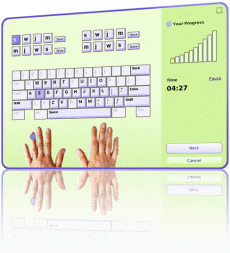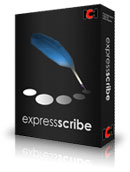HISTORY OF PRESENT ILLNESS: The patient is a (XX)-year-old woman with diffuse large B-cell lymphoma, complicated by spinal cord compression, right lower lobe pulmonary embolism, and bilateral leg deep venous thromboses. She began the R-CHOP chemotherapy regimen on MM/DD/YYYY. Cycle 2 started on MM/DD/YYYY and cycle 3 started on MM/DD/YYYY. The patient presented to my office today for a Neupogen injection. Today is cycle 3, day 10. In my office, the patient had a temperature of 101.5 degrees, and she was found to be neutropenic with WBC 0.4. She was admitted for treatment of neutropenic fever. Symptomatically, the patient reports subjective fevers, although she has no localizing symptoms suggestive of infection. She has no other complaints today. Regarding the lymphoma, the patient presented on MM/DD/YYYY with spinal cord compression. CT-guided needle biopsy of a lumbar mass on MM/DD/YYYY showed lymphocytes, which were positive for CD19, CD20, CD22, and lambda light chain, and negative for CD10. Cytology was consistent with large cell lymphoma. Bone marrow biopsy was negative. CT scans of the chest, abdomen, and pelvis showed lymphadenopathy in the left lower neck, supraclavicular areas, retroperitoneum, bilateral psoas muscles, and L1 vertebral body. LDH was mildly elevated at 276, and the patient did not have any significant symptoms. In summary, the patient has stage IV diffuse large B-cell lymphoma, based on extranodal involvement of the L1 vertebral body. On MM/DD/YYYY, the patient was admitted to the hospital with sinus tachycardia. Workup revealed pulmonary embolism and bilateral leg deep venous thromboses. The patient has been on anticoagulation. She should be taking Coumadin 2.5 mg alternating with 5 mg per day, although her compliance with this regimen has been questionable. Recently, she was found to be supratherapeutic with INR greater than 7. I instructed her to withhold Coumadin for two days, then resume at the prescribed dose. She did not have any significant hemorrhagic complications.
PAST MEDICAL HISTORY: Peptic ulcer disease and osteoporosis.
PAST SURGICAL HISTORY: None.
MEDICATIONS: Coumadin 2.5 mg alternating with 5 mg per day and Protonix 40 mg per day.
ALLERGIES: NO KNOWN DRUG ALLERGIES.
SOCIAL HISTORY: The patient denies alcohol and tobacco use.
FAMILY HISTORY: There is no known history of inherited hematologic or oncologic disorders.
REVIEW OF SYSTEMS: CONSTITUTIONAL: The patient reports subjective fevers x1 day. Otherwise, she denies night sweats, weight loss, fatigue or bleeding. GASTROINTESTINAL: The patient has chronic dyspepsia, which is temporarily relieved with Mylanta or Maalox. All other systems in a 10-point review of systems were reviewed and were negative.
PHYSICAL EXAMINATION:
VITAL SIGNS: Blood pressure 110/56, heart rate 112, respiratory rate 22, and temperature 102.5.
GENERAL APPEARANCE: The patient is alert and oriented, in no acute distress, ambulating slowly without assistance.
HEENT: PERRL. EOMI. Sclerae anicteric. Oral mucosa clear.
PULMONARY: Clear to auscultation bilaterally.
HEART: Regular rate and rhythm. No murmurs.
ABDOMEN: Soft, nontender, and nondistended. No palpable organomegaly.
EXTREMITIES: No edema.
LYMPH NODES: No palpable lymphadenopathy.
SKIN: No rashes, petechiae or ecchymoses.
NEUROLOGIC: No focal neurologic deficits, although, the patient ambulates slowly because of low back pain, which has been present since her initial presentation for spinal cord compression.
LABORATORY DATA: WBC 0.4, hemoglobin 9.8, hematocrit 29.6, and platelets 172,000.
ASSESSMENT AND PLAN: This is a (XX)-year-old woman with diffuse large B-cell lymphoma, pulmonary embolism, and bilateral leg deep venous thromboses, now on R-cyclophosphamide, hydroxydaunorubicin, Oncovin, prednisone cycle 3, day #10. She is now admitted with neutropenic fever without localizing signs or symptoms suggestive of infection. The patient will start empiric cefepime, and blood and urine cultures will be drawn. Neupogen 300 mcg per day will be continued. Antibiotic coverage will be adjusted based on culture findings and clinical examination. Regarding the anticoagulation for pulmonary embolism and deep venous thromboses, the patient will start Coumadin 2.5 mg per day tomorrow. Currently, she is likely to be supratherapeutic. For peptic ulcer disease, the patient will continue Protonix with the addition of p.r.n. Mylanta or Maalox.
source:http://sites.google.com





 8:38 PM
8:38 PM
 blog it
blog it










